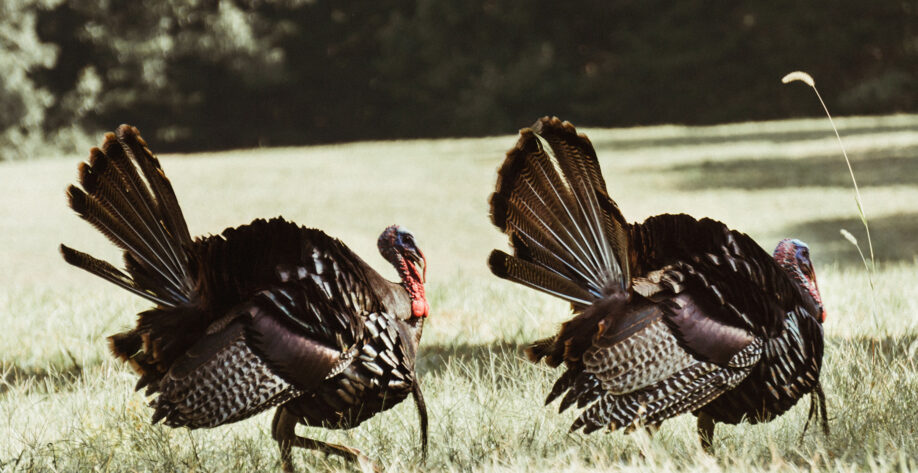It doesn’t matter what management practices are in place, the fact remains that wildlife and aircraft will share the facilities and skies. To minimize the risk of incidents involving damage to aircraft, and possible loss of human and animal life, airport operators should remain aware of conditions attracting and repelling wildlife at their airports. Wildlife management is a dynamic, ever-changing field with innovative new products and technologies continuously being introduced. The FAA’s Wildlife Strike Database lists thousands of strikes each year on and around airports due to wildlife incursions into operational areas. Airport operators can increase aviation safety by using strategic, effective management practices and observing the effects on wildlife. To determine which practices could best suit your airport, operators should take note of several critical factors regarding wildlife:
- What are these animals doing that make controlling them necessary? And why are they attracted to your Airport? Control is necessary when animals pose a hazard to aircraft, either on the ground or in the air. Animals are typically attracted to your Airport to satisfy basic needs for food, water or shelter. Identifying why they are at your Airport is an important element in finding an effective solution. For example, if birds congregate in the infields to eat grubs, insects, or edible plant matter; they can be discouraged by using special fertilizer products that, when ingested, cause slight sickness and natural aversion to that type of food. This will result in them vacating the premises – often permanently. So, knowing what animals are doing and what attracted them is important to finding an effective solution.
- What species of wildlife are causing the problem? Accurate species identification will enable operators to select management practices that are specific to that species. The objective is to control the target wildlife, not all wildlife in the area.
- What are the daily and seasonal movement patterns of the wildlife, and what are the synergistic effects from the surrounding land uses? An example of a synergistic effect of surrounding land uses causing wildlife movement patterns is having wetlands, lakes, or other nesting habitat on one side, while on the other side of the airport is foraging land, such as restaurants, farms, parks, grocery stores, wastewater treatment plants, landfills, or other wildlife attractants. Periods of activity usually occur in the morning or evening when wildlife will move from nesting to foraging areas.
Controlling the Wildlife
Each airport has its own unique wildlife, and should attempt to tailor practices and operations to address them. Once observations have been recorded, it is prudent to develop a wildlife control plan. There are five principle methods for controlling wildlife:
- Avoidance – Airport operators may modify operations during times of increased wildlife movement. Although this practice is generally not practical on larger airports with scheduled commercial traffic, general aviation airports will have times when this practice can greatly reduce the risk of incidents. Additionally, temporary runway closures can provide time to disperse the animals.
- Habitat Modification – any action that reduces or eliminates wildlife’s ability to find food, water, and shelter will likely reduce wildlife hazards. These practices are generally well accepted by the public and minimize the need to harass or harm the wildlife. Reducing the amount of food on or near airports can be accomplished by promoting bird-proof refuse containers, prohibiting the feeding of birds, and promoting good sanitation and litter control programs. Large expanses of open areas at airports also provide habitat for insects and small rodents that attract birds of prey. Taking measures such as mowing and use of insecticides, herbicides, and rodent repellant can minimize risks. Birds also use wetlands and marshes with good vegetative cover as nesting grounds. A good way to reduce their attractiveness is to use vegetation that is undesirable to wildlife. There are varieties of fescue grass that contain fungal microorganisms which are unpalatable to grazing birds, rodents, and deer. Piles of construction debris and discarded equipment also attract wildlife because they provide excellent cover for rodents and coyote. Standing water is also a strong wildlife draw. Where possible, areas that collect water during rain events should be filled or modified to facilitate drainage.
- Exclusion – If food, water, or cover cannot be eliminated by habitat modification then actions can be taken to cut off access from these areas. Perimeter fencing can be used to keep animals off airport grounds and anti-perching devices can be installed on ledges, roof peaks, rafters, signs, posts, etc.
- Repellents – Repellents and harassment techniques are intended to make areas where wildlife congregate more undesirable. These practices deter animals by chemical, audible, or visible aggravation; however, acclimation to repellents is a major problem. To effectively employ this type of deterrent, there are a few factors to consider. What type of wildlife needs to be repelled? Is the Airport properly equipped to deploy these types of control measures? Do you understand the movement patterns of wildlife? It’s important to consider a variety of different repellent techniques to minimize acclimation. Use repellents sparingly when the target wildlife is present and only use products approved by the USEPA, FDA, and State Environmental Agencies. Reinforce repellents with occasional lethal control where appropriate. Examples of repellents include:
- Polybutenes – this repellent make birds uncomfortable when they land on a surface that has been treated because it is sticky and irritating, thus causing birds to look elsewhere to perch.
- Methyl Anthranilate – this repellent has an artificial grape flavoring used in food and beverages. Birds have a taste aversion to this type of flavoring and consequently with food sources treated with this flavor. Standing water may be treated with this chemical to deter birds from drinking and bathing in it. This type of practice is best used in temporary pools of water after rainfall, since only a few days of repellency is required.
- Anthraquinone – this chemical is applied to grounds where birds and other animals forage for food. Birds ingesting this chemical become slightly ill and develop post-ingestion aversion to the treated food source. Birds eventually associate the color of the plant with the sick feeling and avoid the treated food source. Treat areas where birds are grazing, and the effects will apply to all areas where that plant is present.
- Propane Cannons and Pyrotechnics – these methods produce loud blasts which sound like firearms but birds tend to acclimate quickly and it becomes background noise to them. This practice should be used sparingly in conjunction with lethal or other practices.
- Taxidermy Mounts – replicas or real animal mounts of predators can be helpful in scaring wildlife away from critical areas by producing a “scarecrow affect.” Hawk effigies, stuffed coyotes, and Mylar-reflecting silhouettes have shown to be effective for a short period of time. Radio-controlled model aircraft can also be used to provide both visual and audio stimuli that repels birds.
- Live Trapping – Specialized traps, drop nets, and snares will help to capture live animals and relocate them to other areas off site.
- Lethal Controls – These types of management practices are generally frowned upon by the public. These should only be used when all other methods have been exhausted, and should be replaced by a long-term, non-lethal solution.
Of the management practices discussed in this article, the most critical and often overlooked factor in ensuring success of a management program is to employ motivated, trained professionals who are knowledgeable in the management of wildlife, and understand the circumstances at your airport that can cause wildlife hazards.
Additional information on wildlife hazard management:
Wildlife Hazard Management at Airports
Provides information on the FAA Wildlife Strike Program, the FAA National Wildlife Strike Database, agencies and organizations having jurisdiction over wildlife, federal regulations and policies impacting wildlife management, identifying wildlife hazards at airports, developing Wildlife Management Programs, evaluating Wildlife Management Programs, training for Wildlife Management Program personnel, and wildlife control strategies and techniques.
Hazardous Wildlife Attractants On or Near Airports
Provides guidance on certain land uses that have the potential to attract hazardous wildlife on or near public-use airports. It also discusses airport development projects (including airport construction, expansion, and renovation) affecting aircraft movement near hazardous wildlife attractants.
Tagged In:
Airport Engineering & Planning
